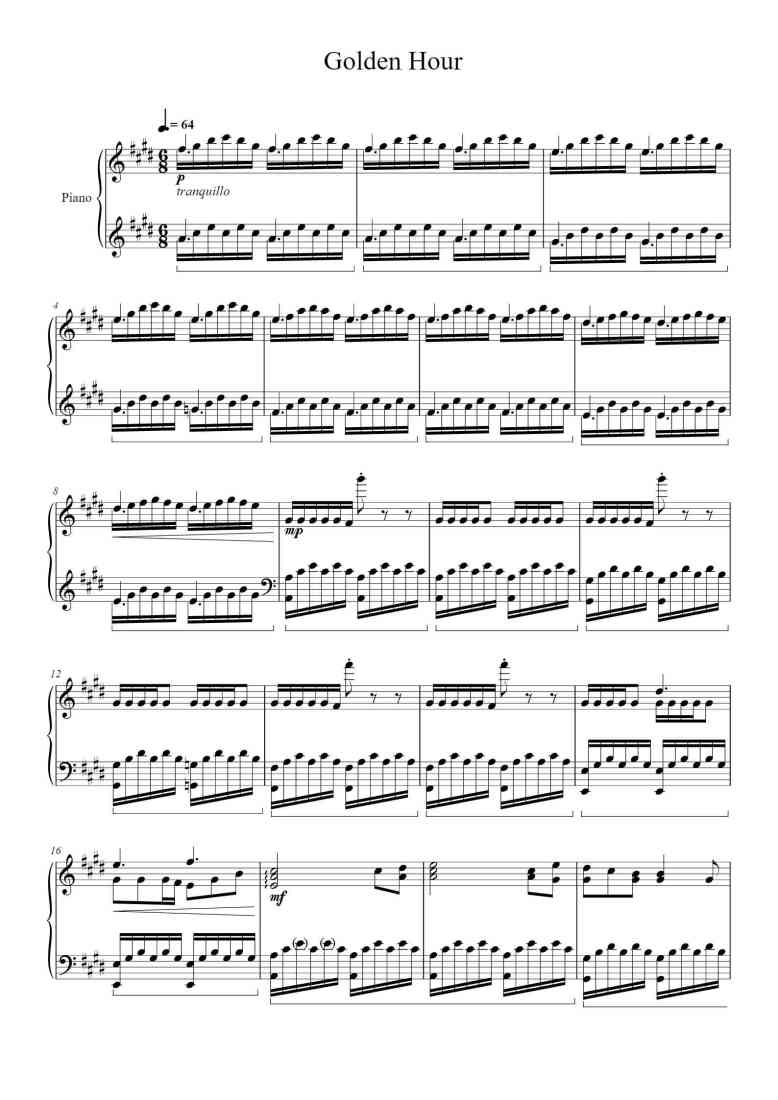1 / 1
Golden Hour - JVKE - XX
Free Sheet music for Piano
The resources on this platform are uploaded by users. If you believe your intellectual property rights have been infringed upon, please contact us promptly. Email: [email protected]
About This Sheet Music
Golden Hour, by JVKE
Piano Song Names: Golden Hour
- ArtistJVKE
- Number of imitations:150
- GenreHot
- KeyE Major
- Tempo94
- Pages5
- ArrangedJVKE
- ComposeJVKE
- IntroductionGolden Hour, Sheet Music is E Major, Composer by JVKE and Arr.JVKE,Suitable for all Users to play learning.
Other Versions Sheet Music




